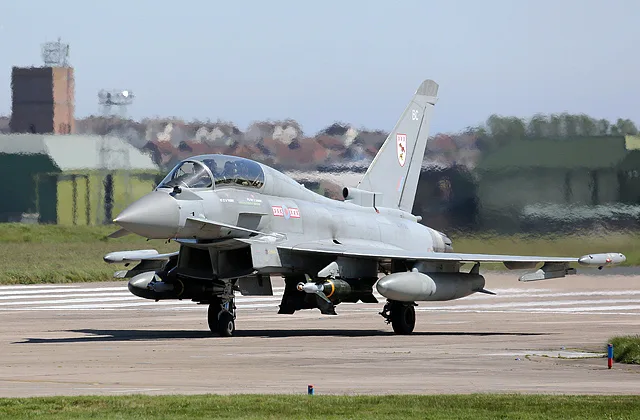The presence of military airbases and recent geopolitical tensions contribute to the rise in sonic booms over this region.
In recent weeks, residents in Norfolk were startled by a sonic boom caused by an RAF Typhoon jet that was scrambled to intercept an Air India flight over a bomb threat that later proved to be a hoax. This incident has reignited discussions about sonic booms and their prevalence in the East of England, where more than half of the UK’s recorded sonic booms have occurred since 2013.
What Causes a Sonic Boom?
A sonic boom is produced when an object travels through the air at a speed greater than that of sound, which is approximately 660 mph (1,060 km/h) at altitudes around 60,000 feet (18,300 metres). As the jet accelerates past the speed of sound, it generates high-energy shock waves that combine to create a powerful sound wave, resembling a thunderclap or an explosion. These sound waves can be heard over vast areas, akin to the wake left by a boat in water.
Embed from Getty ImagesFrequency of Sonic Booms in the UK
Between April 2013 and February 2021, the UK’s Ministry of Defence recorded 13 sonic booms, with seven occurring in the East of England. Under UK aviation law, supersonic flights are generally restricted to over the sea unless operational needs dictate otherwise. Notable incidents in the East include a sonic boom from an F-15 military jet in 2013 and a Typhoon fighter jet in January 2021, which was deployed for an emergency situation at Stansted Airport.
While these occurrences are relatively rare, the impacts of sonic booms can be significant. Between 2013 and 2021, the MoD received 55 compensation claims for property damage related to sonic booms, including cracked windows, damaged cars, and even a fish tank.
Why Are Sonic Booms Common in the East of England?
The East of England’s elevated incidence of sonic booms can be attributed to several factors. The region hosts multiple military airbases, including RAF Marham, RAF Lakenheath, and RAF Mildenhall, which are integral to the UK’s defence strategy. The heightened military activity, particularly in response to geopolitical tensions, has led to an increase in the number of fighter jets conducting training exercises and emergency interceptions.
Peter Gunn, an aviation historian, noted that the ongoing situation in Ukraine has resulted in intensified training manoeuvres by US Air Force planes based at Lakenheath, contributing to the frequency of sonic booms. Additionally, Stansted Airport’s role as a designated emergency landing site for planes experiencing security threats necessitates the scrambling of jets, which can lead to sonic booms over land.
Anticipating Future Sonic Booms
Historically, the Concorde was the only commercial supersonic passenger jet, and its retirement in 2003 ended an era of regular sonic booms over the south of England. However, recent advancements in supersonic flight technology could herald a new wave of sonic booms. Companies like Boom Supersonic are developing commercial jets capable of flying at twice the speed of current airliners, with over 130 orders already placed.
NASA is also exploring quieter supersonic aircraft, aiming to overcome restrictions on flying over land. The UK Civil Aviation Authority is actively working on regulations for future supersonic and hypersonic aircraft, which could lead to more sonic booms if technological advancements mitigate their impact.
The Aviation Environment Federation has raised concerns regarding the potential rise in sonic booms with the advent of new supersonic jets, urging for cautious consideration of their environmental implications.
As technology evolves and more supersonic flights are introduced, the East of England may continue to experience sonic booms, prompting ongoing discussions about their effects on communities and the environment.
